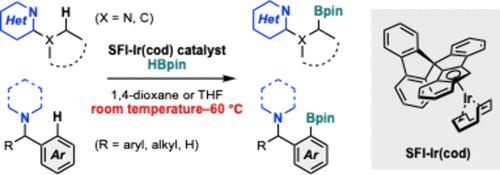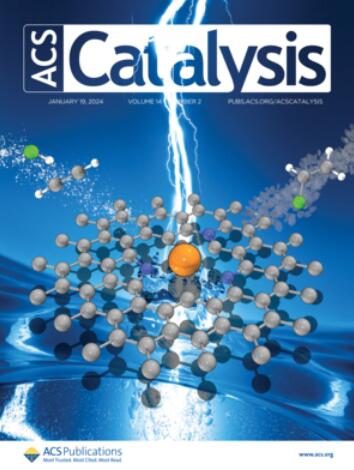Ir-Catalyzed, Nitrogen-Directed C(sp3)–H and C(sp2)–H Borylation with a Spiro-Fluorene-Indenoindenyl Ligand
IF 11.3
1区 化学
Q1 CHEMISTRY, PHYSICAL
引用次数: 0
Abstract
We have developed a strategy to facilitate the nitrogen-directed C–H borylation using an Ir(cod) catalyst with a spiro-fluorene-indenoindenyl (SFI) ligand through CH (ligand)−π (substrate) interactions and the selective formation of an electron-rich and less bulky IrH(Bpin) intermediate rather than Ir(Bpin)2. This Ir catalyst allows the nitrogen-directed regioselective C(sp3)–H and C(sp2)–H borylation with HBpin at near room temperature without photoirradiation with a broad substrate scope.

求助全文
约1分钟内获得全文
求助全文
来源期刊

ACS Catalysis
CHEMISTRY, PHYSICAL-
CiteScore
20.80
自引率
6.20%
发文量
1253
审稿时长
1.5 months
期刊介绍:
ACS Catalysis is an esteemed journal that publishes original research in the fields of heterogeneous catalysis, molecular catalysis, and biocatalysis. It offers broad coverage across diverse areas such as life sciences, organometallics and synthesis, photochemistry and electrochemistry, drug discovery and synthesis, materials science, environmental protection, polymer discovery and synthesis, and energy and fuels.
The scope of the journal is to showcase innovative work in various aspects of catalysis. This includes new reactions and novel synthetic approaches utilizing known catalysts, the discovery or modification of new catalysts, elucidation of catalytic mechanisms through cutting-edge investigations, practical enhancements of existing processes, as well as conceptual advances in the field. Contributions to ACS Catalysis can encompass both experimental and theoretical research focused on catalytic molecules, macromolecules, and materials that exhibit catalytic turnover.
 求助内容:
求助内容: 应助结果提醒方式:
应助结果提醒方式:


